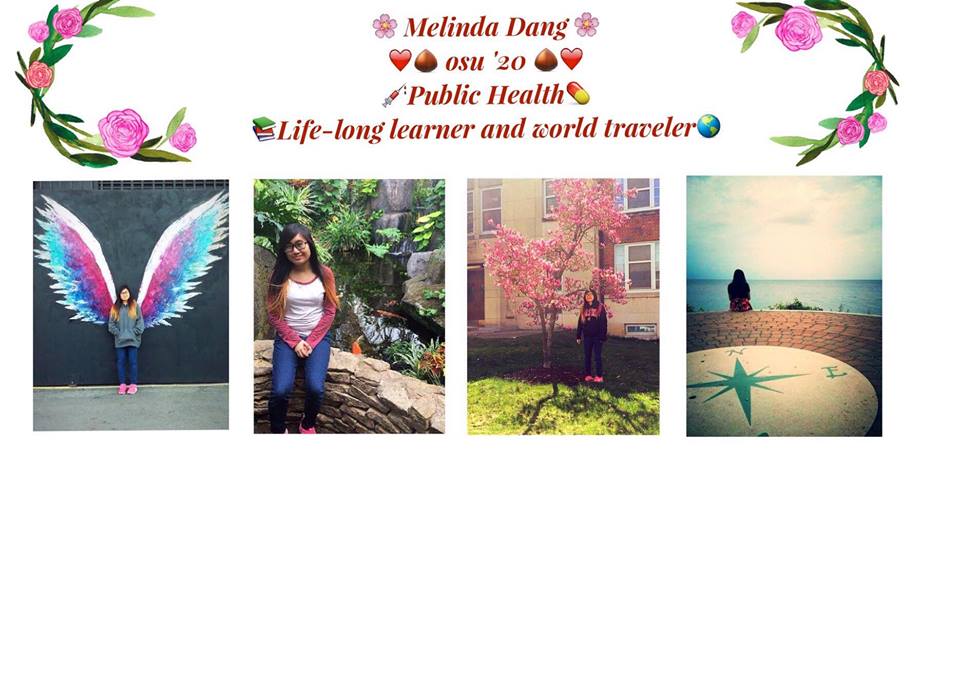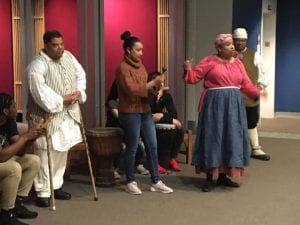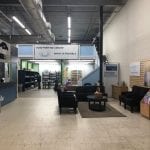I went on my last undergraduate trip with the amazing student organization MUNDO. We took a road trip down to the South for spring break 2020. Our group of 15 people (12 students and three staff mentors) went to Savannah, Georgia for a few days. For the second half of the week, we explored Atlanta. The purpose of this entire experience was to expand our awareness about the history of colonial cities and their role in the Civil Rights Movement, as well as the continuous struggles for equity in the United States. We became armed with greater knowledge and greater confidence in ourselves to create social change, which can start by holding space and conversations. Our group examined social justice issues and engaged in critical thought and discussions throughout the week. It was truly fascinating and as some of us say in colloquial terms, “mind-blowing.”
Saturday, March 7th – The Road Trip

Everyone arrived at the three campus pick-up locations on time. The group was able to depart for Georgia before 8:00 AM. The drive down South was peaceful. I worked on an assignment the whole time and was pleasantly surprised and thankful that the bus WiFi was very cooperative. It allowed me to listen to music too! We made a stop for lunch in Virginia and I tried Bojangles for the first time. I did not try their famous chicken and biscuits, but I ate a grilled chicken sandwich with deliciously seasoned fries. We continued and arrived in Savannah, Georgia around dinner-time. Several of us got food at an Asian take-out restaurant called Tokyo Café. I was excited to support a small business that is not only locally-owned, but also run by people of color. The area we were in had a plethora of hotels and restaurants, both chain and local. It was interesting to see Spanish moss trees everywhere. That night, I flipped through several brochures in the hotel to help me determine what I wanted to do in my free time.
Sunday, March 8th – Settling into Savannah
People ate breakfast in the hotel before we met up outside in the hotel parking lot around 9:35 AM. Breakfast options included make-your-own waffles, sausage patties, fried eggs, sliced cheese, and boiled eggs. Fresh fruits (apples, oranges, bananas) along with a few cereal options and oatmeal were also available. We addressed the indigenous peoples of the land we were currently visiting: the Muskogee (Creek), Guale, and Yamasee tribes. One of the staff mentors said to the group, “These tribes continue to thrive on this land today, but we acknowledge the genocide experienced by their ancestors in the past and the emotional labor necessary to continue the legacy.”

We boarded the bus and made our way towards the Historic District of Savannah. Lining the sidewalks on each side were trees of Spanish moss that draped down towards us. The air felt fresh and less polluted while the atmosphere felt more relaxed and carefree. When we reached Chippewa Square, we were given about 20 minutes to roam the streets before our Savannah Walking Tour would begin to give us an orientation to the area. Some of us stopped into a bookstore to peruse the books. Not many shops were open at 10 AM. Our tour guide was an older man with a well-rehearsed script and the willingness to answer any questions. We learned about how Savannah was founded and other neat facts. This laid down a foundation for us about how Savannah came to be about and events that took place there that shape life today. I learned that Georgia was named after King George. I also learned that churches and bars are usually in close proximity to each other. This tour was about two hours long and we went through a handful of the 22 squares in Savannah.
A peer shared her thought out loud about how these stories of the individuals (often military-involved men) who get honored by monuments can be glorified, and a staff mentor felt so proud from hearing this analysis. Why are certain individuals displayed and remembered in a city’s history? What traits do they have in common? I appreciated hearing my peers think about anything and everything.
We did not really have time for a sit-down lunch. Some people brought snacks with them. This is an important tip for MUNDO experiences: pack a snack. The guided tour of the First African Baptist Church was incredibly impactful. It was constituted in December 1777 and is the oldest continuous Black church in North America. As visitors sat in the pews, a young man in his 20s was our guide and he did not explain everything explicitly to us but allowed us to make the connections for ourselves.

Students and two staff mentors (far right) proudly pose in front of the church. Our hour-long tour transported to us through history and transformed our thinking.
Our guide told us the story of George Leile, an African American man who was enslaved and later freed, and who baptized fellow enslaved individuals. Reverend Leile established Baptist churches in Jamaica and people in his Congregation established FABC in Savannah. Words that came to my mind from the tour information: intentionality, purpose, foresight, and vision. It dawned on me how resilient and resourceful enslaved and free African Americans were and their intentionality behind the church design and objects: stained-glass windows, pews, floor, etc. They were more intelligent than they were made out to be by their slave-holders and the public.
For more of the history, please see this site: https://firstafricanbc.com/history.php
Additional information that made an impression on me was that the church had a barrel roof; the walls and ceiling met in rounded corners to allow sound to travel so that someone’s voice can be heard anywhere in the room without a microphone. In the basement, a small part of the floor had holes, to let the Georgia pine wood breathe due to moisture, and to allow people resting underneath breathe as well. The FABC housed people fleeing to freedom as part of the Underground Railroad. The people associated with this church also resisted white supremacy and colonist forces in that the cross symbol used was an Ethiopian cross, not European. Subtle, but significant.
It was also interesting that the church’s 17 pastors have all been black men, and a number of them were mixed race and light-skinned. An important conversation matter is how lighter skin complexion can come with greater privileges and acceptance; colonialism and colorism are part of the equation.
We often hear the expression that knowledge and/or consciousness is power, and this rang true for me because of this tour. Enslaved peoples were seen as threatening to the status quo if they knew how to read and write. They were not allowed to read or write or even possess writing instruments or learning materials. The guide drew correlations to world history, when during the Holocaust, books were burned. A culture is at risk of dying if materials such as books and artifacts are erased. Still, people learn how to resist and persist. African Americans picked up English throughout the years.
The tour guide ended his time with us by imparting the phrase and African-American proverb, “Each one, teach one.” The message here is to not sit and stew with newfound knowledge, but share it with others. Sometimes ignorance or lack of knowledge about a topic does not mean that someone is unintelligent or uninterested. Rather, it can be because no one is willing to tell somebody else. Taking the time to teach somebody something new can pique their interest and spark that desire to learn more.
After the tour, the group met up outside to reflect on our experience. Some of us shared that we did not expect to learn so much from a tour of a church. It actually opened our eyes to a lot regarding enslavement and the legacy of enslaved African American ancestors. We had two hours of free time in the area, and a group of us ate pizza right by the church. We were at the edge of the Savannah City Market, which is a great tourist spot. I enjoyed sampling pralines.
Back at the hotel, I took a quiz for my online courses. Then I went with two friends to walk around the area. We stopped by Walgreens, ate mini glazed donuts at Krispy Kreme, walked past Yamaha, explored Publix, almost went into Staples but found it closed, stopped into Amigo’s Latin Grocery (actually a small family-owned restaurant, not a grocery store), and went straight into Carey Hilliard’s for dinner.
I will carry a backpack with me to hold more items and prevent my one shoulder from being overburdened and sore. Additionally, I will keep my journal on hand to jot down the information provided and insights developed from the tours!
Monday, March 9th – Tours Galore
In the morning, MUNDO had some free time for us to explore. I ate leftover fried rice for breakfast. Then several peers and I took ride-shares (Lyft, Uber) to the Savannah Botanical Gardens. We spent close to an hour looking at trees. One of us had wandered off into the hiking trails so the rest of us went off to find her. This excursion aided my mental well-being since it was a peaceful environment that felt secluded from technology.

Half of us decided to immerse ourselves in nature. Not many flora was in bloom but it was still nice to see and be around the grounds.
In the afternoon, the entire group went on a Juliette Gordon Low birthplace tour. Juliette Gordon Low founded Girl Scouts in 1912 to encourage girls to discover, lead, and be their best selves. Being in Girl Scouts would also promote girls’ confidence, character, and courage. We learned about Gordon Low’s upbringing and her family. Basically in every room, there was a painting and/or sculpture of a family member; some were created by Gordon Low herself, or by her relatives. She married a multimillionaire, and the privilege and resources that come along with that did play a role in her later success.
Find out more at: http://www.juliettegordonlowbirthplace.org/en/about/about-girl-scouts-of-the-usa.html
Free time was scheduled for the rest of the afternoon. Many of us went to Tybee Beach, about 20 minutes away. We took Lyfts and Ubers to get there, and we spent a few hours frolicking on the sand and dipping our feet into the water. One student read a book and another took the time to look for shells. Later, the beach group ate dinner in the area before ride-sharing to the Ghost Tour location.
As evening set in, MUNDO did a Ghost Tour, which was thrilling yet terrifying. We rode on a trolley with a narrator/storyteller who shared some stories/legends. We stopped at the Andrew Low house and then Perkin’s and Son’s Ship Chandlery. The latter stop was truly something different.

We traveled via trolley and made two major stops. The seating was comfortable. The gnats in the air were not.
Tuesday, March 10th – Power of People
In the morning, the group did a small discussion before exploring the Ralph Mark Gilbert Civil Rights Museum. I learned that Savannah’s Civil Rights Movement differed from other movements in Southern cities. According to the museum, “…the movement in Savannah was fueled with home grown passion. It was fully organized and implemented by local African American citizens, the victims of the laws which gave people of color second class status. Outstanding leadership in the local adult and youth branches of the NAACP, the courage and eagerness of Savannah’s youth and the wisdom of local elders combined to make the quest for equal rights in Savannah, truly, a movement from within.”
From the museum’s welcome documentary and displays, I learned more about Savannah’s store boycotts that endured for 16 months! The substantial economic effects included a six percent decrease in retail sales and ultimately resulted in white business owners to start integrating their workforces. Slogans used during the 1960s included, “Don’t Shop Jim-Crow! We Will Not Shop Jim-Crow! We Must Not Shop Jim-Crow!” I learned more about the role of the Savannah branch of the NAACP. It also became clearer to me that sit-ins escalated into extreme discomfort, emotionally and physically. People would yell at the brave individuals who sat down and asserted that they deserved to be served and treated with equality. I also found a list of sit-in rules to follow. The last rule stated, “Remember love and nonviolence,” and I cannot imagine how hard it must have been to practice back in that era, which does not feel so far behind us.
MUNDO had a few hours of break for lunch and free time. Four peers and I had a conversation over Wendy’s and then walked over to a cat café, where we made reservations. After that relaxing time, we joined the rest of the group for the museums.
For about 10 minutes, in two subgroups, we reflected over a few questions/prompts before proceeding into The Telfair Museums and Jepson Center, which contain a vast collection of artwork. There was artwork made by enslaved individuals. One of them was David Drake “Dave the Potter” (American, c. 1801-1870s). We looked at his alkaline glazed stoneware, just one of the thousands of vessels he made as a potter. “He signed hundreds of them and inscribed dozens with poems and verses.” The description also read that he was a “rare literate man,” which did raise some thoughts by members of our group. We also looked at impressionist paintings and sculptures.
We then had a special tour of the Owens-Thomas House estate. The tour guide did an excellent job at explaining the history of the house, which had a separate building designated the “slave quarters.” We saw what it was like, and how about a dozen people had no other choice but to live in such a cramped space. We learned about haint blue, which was painted around the quarters to resemble the sea that ghosts cannot cross, in Gullah culture. The Gullah are African Americans who live in the Lowcountry region of the U.S. states of Georgia, Florida, and South Carolina. They have their own language as well.

These are some of the names of enslaved peoples that were recovered, and the empty planks are for those whose names could not be recovered. George Owens enslaved almost 400 people on his plantation, according to the plaque text.
This plaque informed of the power behind words and suggests that people choose wording carefully because of the meaning(s) and context.

The text says:
Words have power.
They express meanings, ideas, and relationships. They impact how we relate to the past and to one another.
As we share this history, we strive to use words that are empathetic to those whose history has been marginalized. For example, we use phrases like enslaved woman, rather than slave. The noun slave implies she was, at her core, a slave. The adjective enslaved reveals that though in bondage, bondage was not her core existence.
Furthermore, she was enslaved by the actions of another. Therefore, we use terms like enslaver, rather than master, to indicate one’s effort to exert power over another. You may hear other phrases, like slave labor camp or escapee, rather than plantation or runaway. These reinforce the idea of people’s humanity rather than the conditions forced upon them.
To end the evening on a more comforting note, the group headed to the famous Leopold’s Ice Cream. This place has seen patrons for over 100 years, and is one of the best ice cream parlors in the city.
Please see the next blog post to read about what happens next for the MUNDO spring break experience group, in Atlanta, Georgia!




























































































